Samoa part 1: Camp Samoa
Holiday time! Now, you will say we are already on holiday. But, honestly, you cannot call half a year holiday, that’s already life and being a tourist can get exhausting, so you need some holidays from the holidays. We decided to go to the islands of Samoa. We left New Zealand at the 10th of Januray with only hand bags for two weeks. With two hours delay, after almost having missed the connection flight in Auckland, but Apia being a small airport made the plane wait for us and the other 10 passengers from the Wellington flight, we finally arrived in the capital of the main island of Samoa. There, Maty, a samoan, and Denis, a Kiwi, were already waiting for us. The first nights, we had booked accommodation in their camp and they fetched us with their car. It had been raining the whole day and it was already getting dark, when we arrived at our camp after a 20 minutes’ drive by car. Maty and Denis told us a lot of about Samoa on the drive. Camp Samoa had been described on the internet as the place to stay in Samoa for young people, with different sleeping options and tours available. The reality was miles away from that description. It was a fenced, wooden hut in the middle of nowhere, with dirty sleeping places, dirty linen, dirty kitchen and dirty bathroom in the middle of the jungle. Not to mention all the bugs and ants that were everywhere. Denis, the owner, was convinced that all visitors should stay at his place for at least three weeks and participate in all his tours to get to know the island and understand the culture. Furthermore, no one comes to Samoa to go to the beach and we shouldn’t hope about getting tanned, it would only rain here. It is all about staying with local people and helping him in his plantations for getting discounts on the stay.
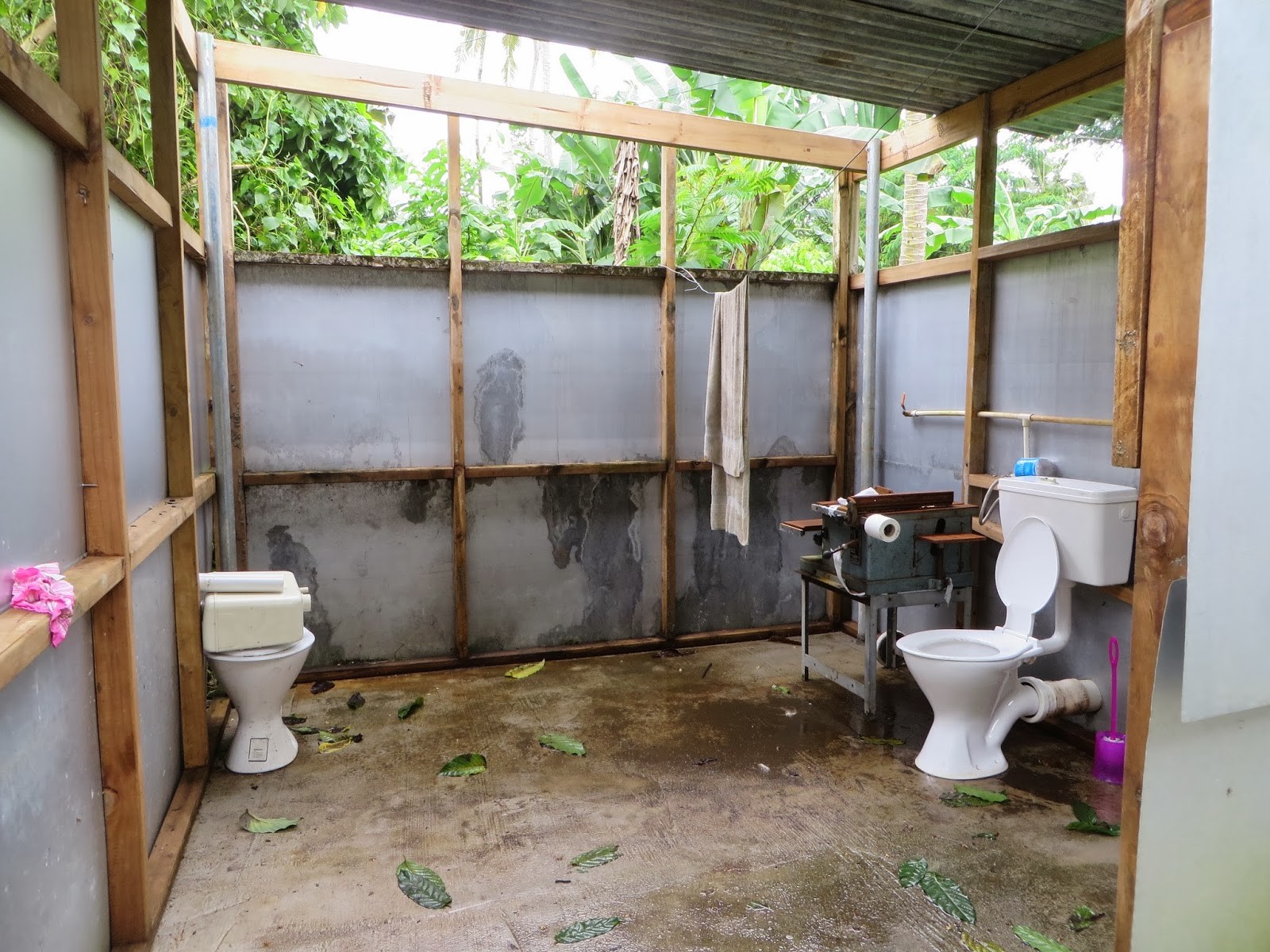

The next morning, we got a delicious smoothie for breakfast, fresh from the own plantations: papaya, coconut and banana. Then, we went together to Apia, the capital. There, they showed us the markets and the bus station to get home again. So, we went for a stroll at the big market, where you could get fresh fruits, vegetables, meat, jewellery, clothes and all kind of cooked meals. The jewellery is made from coconuts and mussels and many fine things from wood. Taking the bus home, was a real adventure! You never know, if it is coming and if yes, at what time. I think it is just about luck. Normally, the buses go until 17 o’clock, but if the driver doesn’t want anymore, he just stops, whenever he wants. That day, we waited on hour on the bus and then two and a half in the bus for the driver. The busses are very old, not very big and they loudly play bad hip hop music. To get more people in the bus, people sit on each other’s laps and everyone is helping with the luggage. Firstly, it is kids on adults, then women on men and in the end, nobody cares anymore. After getting off the bus, we still had to walk a short way through the jungle to get back to our camp. Dinner was instant noodle soup with chicken, which was hacked completely, inclusive bones. I wasn’t hungry that night, can’t really explain why… We wanted to get away as soon as possible. The continuous rain and the mosquitos didn’t improve our situation.
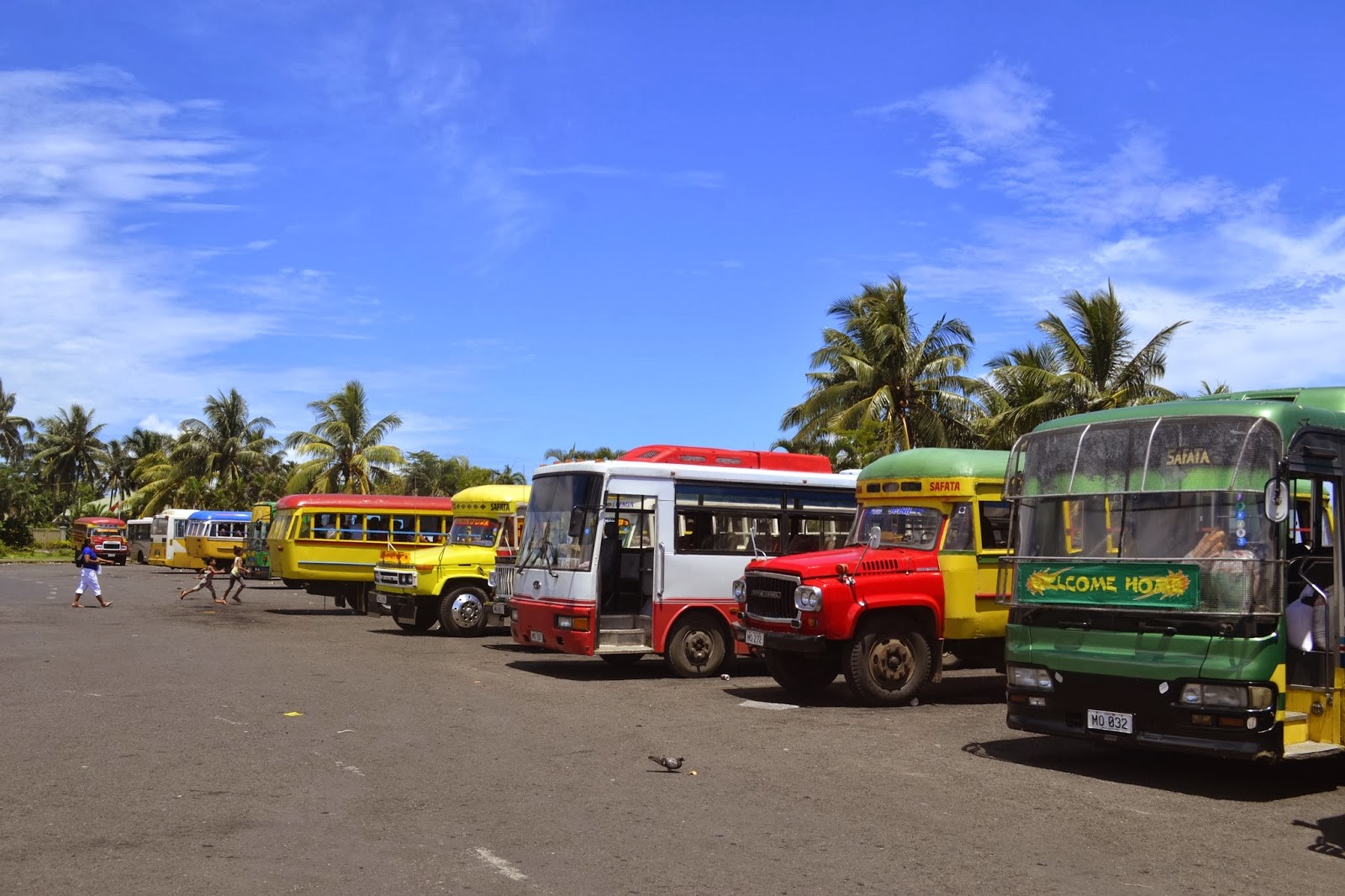
We knew that another Argentinian couple should arrive that night and we wanted to wait for them, hoping to find some travel companions. The two of them arrived in the night at 3 o’clock and firstly had to carry mattress, which was completely full of ants, from a hut in the plantation into the living room as the other hut was not water proof. The next day was a Sunday and we wanted to stay for that day as it is a very important day for families and also there are no buses that day. Sunday, the families go together to church – Samoa is very catholic – and then they prepare together the food. We thought it would be nice to experience that and that this would not be possible at a holiday resort. And Marty, his wife and two children were actually really nice. Finally, we didn’t go to church as Denis overslept. So, we only made food with the Samoan family. Eva, Marty wife, showed us, how to get Taro and Tamu, two eatable roots, and breadfruit from the plantations., how to make baskets from coconut leaves and how to use them. At the same time, they taught us many Samoan words, which I sadly forgot. Then, we started to prepare the Umu. This is the Hangi of the Samoans; it is similarily prepared, with the only difference that they don’t dig a hole, but just cover it with Tamu and banana leaves. For the meal, Denis promised us that the high chief, a kind of mayor, from the neighbour town would eat with us, which never happened. The meal consisted of chicken, Taro, Tamu and coconut crème. It was delicious, but something must have been wrong with it, as firstly me, then my boyfriend and finally the Argentinian girl, sadly could not keep the meal… For dinner, we had the same stuff – superfluous to say, that I skipped it – with a desert of rice with coconut milk, cacao and sugar. This sounded really good, but I didn’t dare to eat anything.
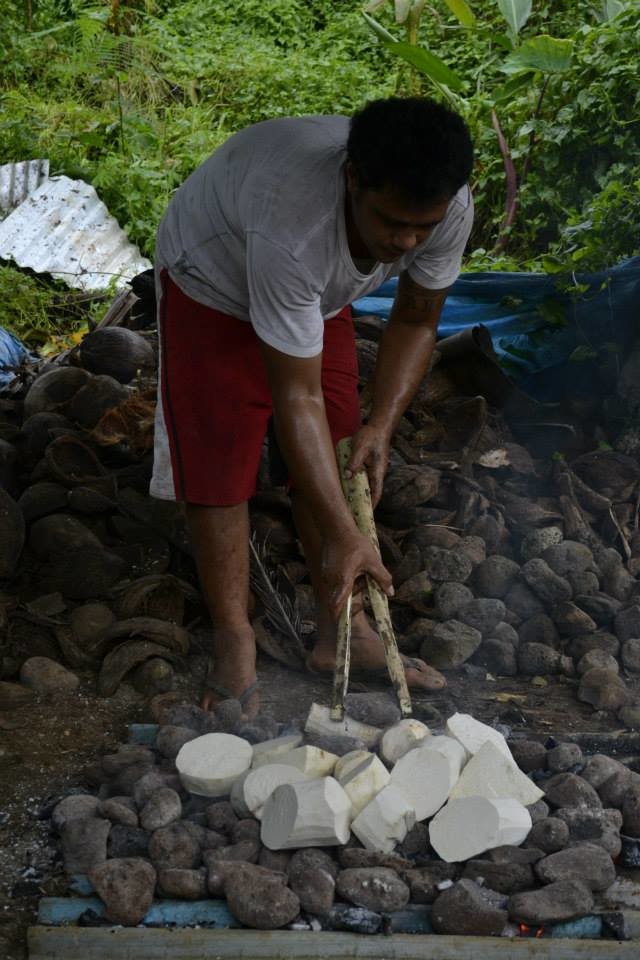
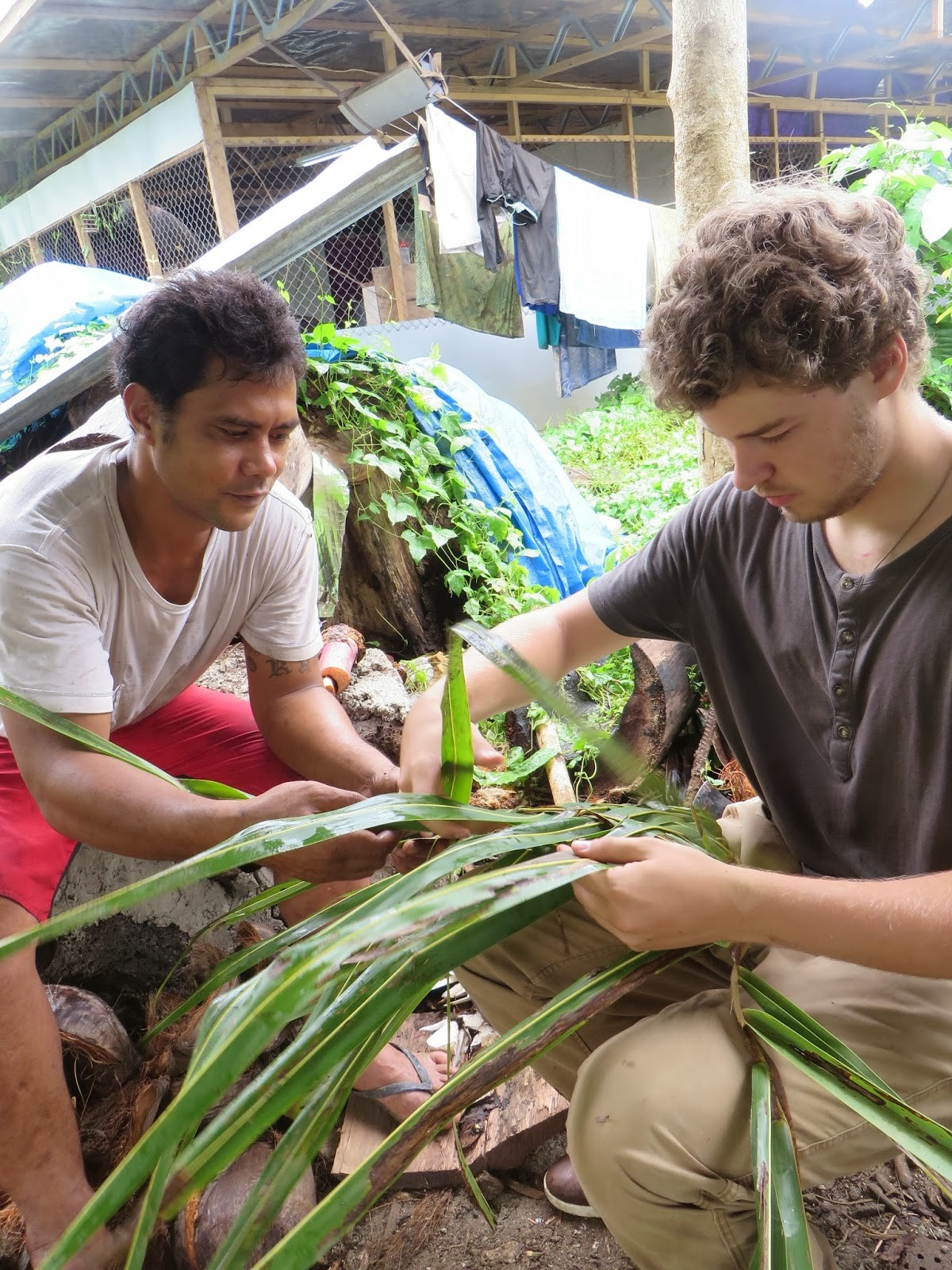
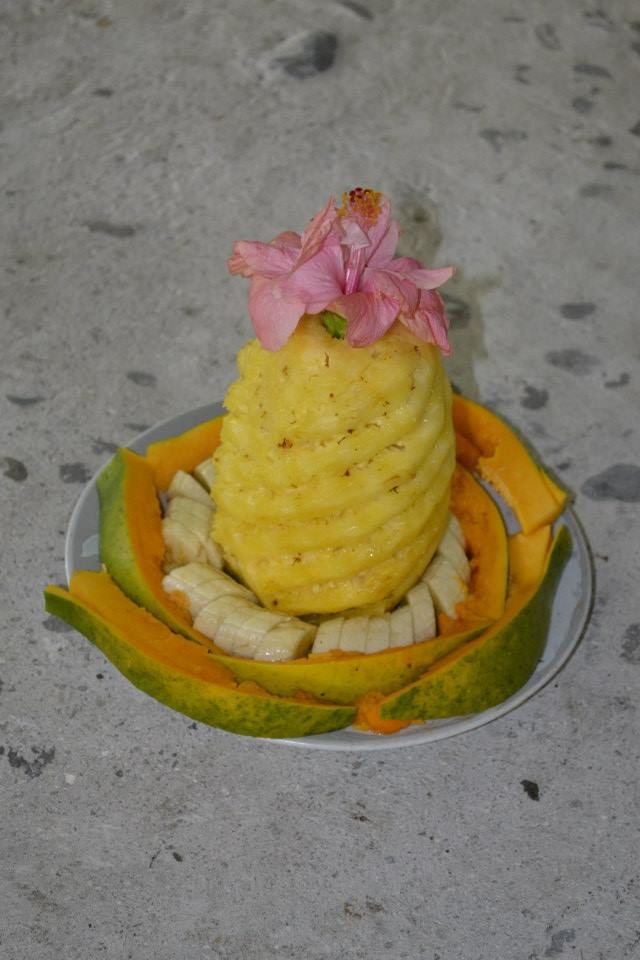
Monday, we just wanted to leave and the only way to get away was booking Denis’ Tsunami tour around the island. On this tour, we visited the Soap Factory - working only with local products, and smelling seductively good. I bought different kinds of soaps from different plants -, a coconut oil factory - which delivers many known cosmetic industries -, some churches and temples, the Treesort with his houses in the trees, some more expensive and nice resorts and a wonderful waterfall. Our destination was the Lalomanu beach, which should be very beautiful. Denis told us there was no good weather during the rain-season, but we four all wanted to go there and agreed that even with bad weather we would have a better time at the beach than in this so called camp…
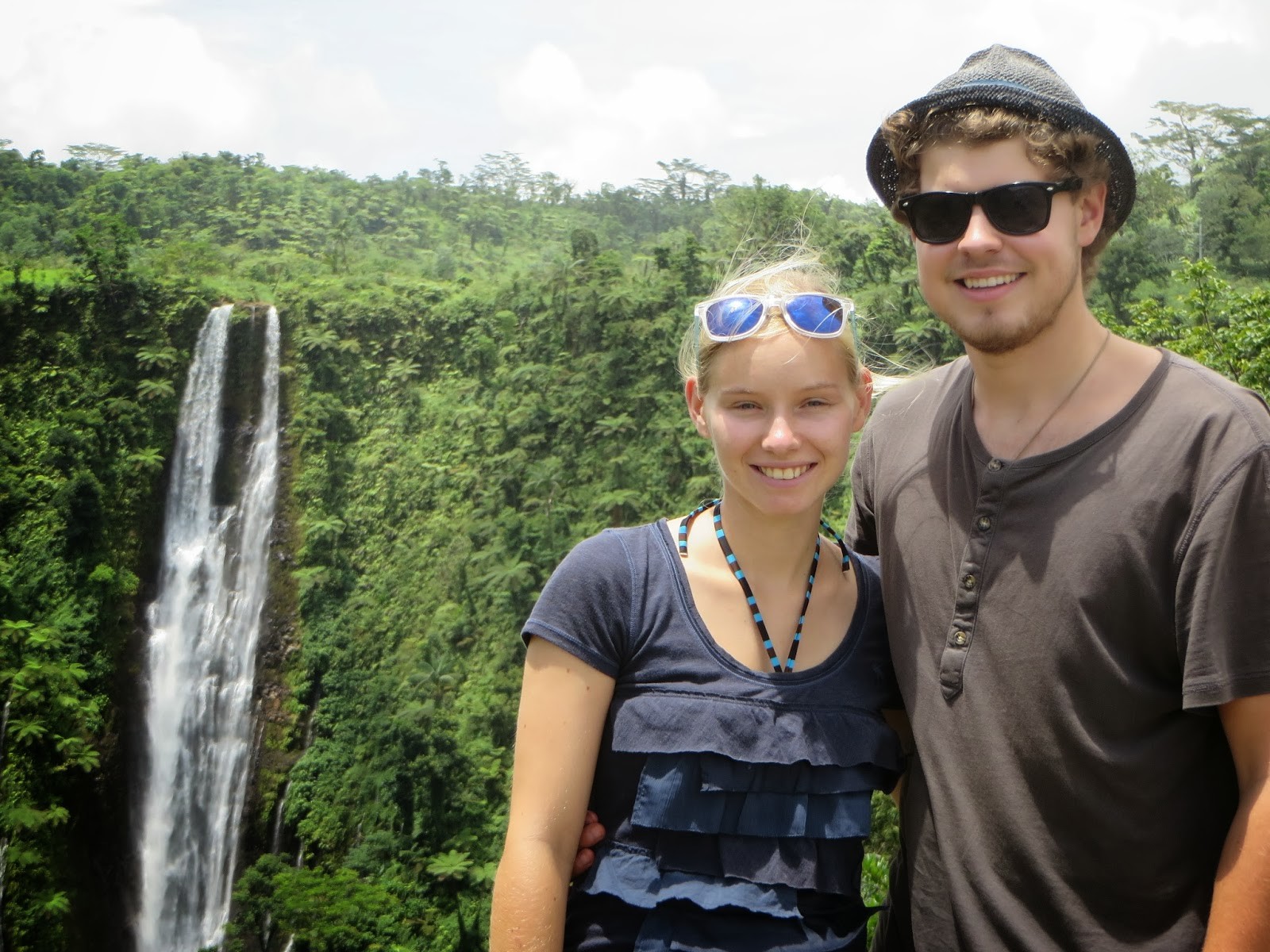
Photo gallery
Content available in other languages
- Italiano: Samoa parte 1°: Campeggio Samoa
- Français: Samoa partie 1: Le Camp Samoa
- Español: Samoa parte 1: Camp Samoa
Want to have your own Erasmus blog?
If you are experiencing living abroad, you're an avid traveller or want to promote the city where you live... create your own blog and share your adventures!
I want to create my Erasmus blog! →










Comments (0 comments)